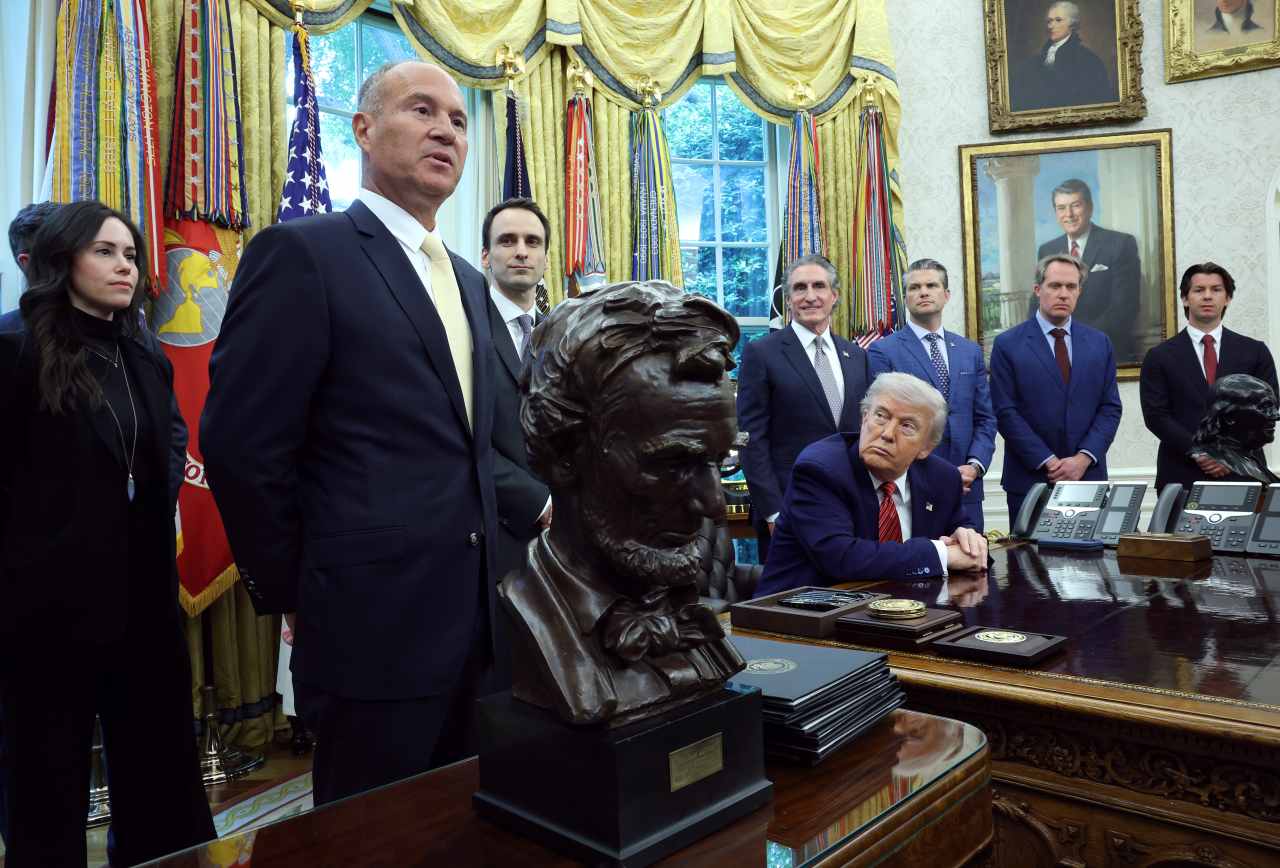WASHINGTON, D.C., May 24, 2025 — Shares of nuclear power companies soared on Friday following President Donald Trump’s signing of executive orders aimed at revitalizing the U.S. nuclear energy sector. The orders, signed in a White House ceremony attended by industry leaders like Constellation Energy CEO Joe Dominguez and Oklo CEO Jacob DeWitte, seek to streamline regulatory processes for new reactor approvals, enhance domestic uranium fuel supply chains, and promote small modular reactors (SMRs) to meet rising energy demands. However, analysts caution that significant hurdles could slow the sector’s progress despite the initial market enthusiasm.
Executive Orders Fuel Market Rally
The executive orders, described as a “game-changer” by some industry insiders, include several key provisions. They mandate the Nuclear Regulatory Commission (NRC) to expedite licensing decisions for new reactors within 18 months, overhaul the NRC’s regulatory framework, and create pathways for the Departments of Energy and Defense to build reactors on federal land. Additionally, Trump invoked the Cold War-era Defense Production Act to declare a national emergency over U.S. reliance on Russia and China for enriched uranium, aiming to boost domestic uranium mining and enrichment capacity. These measures align with Trump’s broader energy agenda, which includes a focus on powering AI-driven data centers and supporting his “drill, baby, drill” campaign promise.
The market response was swift. Shares of uranium miners like Uranium Energy Corp. jumped 19.6% to $6.17, Energy Fuels Inc. rose 10.4% to $4.97, and Centrus Energy Corp. surged 15% to $107.11. Advanced reactor companies also saw significant gains: Sam Altman-backed Oklo Inc. climbed 20.7%, Nano Nuclear Energy soared 22%, and NuScale Power gained 14.2%. Nuclear utilities like Constellation Energy, the largest U.S. nuclear operator, rose 2%, while the Global X Uranium ETF surged 9%. Posts on X reflected the bullish sentiment, with users like @DavidTradesATL and @AlphaPicks highlighting the potential for nuclear stocks like Oklo, NuScale, and Nano Nuclear Energy to benefit from eased regulations and expanded site access.
Analysts from H.C. Wainwright noted, “We are clearly witnessing the billowing of tailwinds behind the broader nuclear industry,” citing the orders’ potential to address the first significant rise in U.S. power demand in two decades, driven by AI and cryptocurrency data centers. Wedbush analysts echoed this, stating, “Our confidence in the AI revolution data center buildout is increasing under the Trump administration, with nuclear energy ultimately playing a key role in powering data centers.”
Trump’s Vision for Nuclear Power
Trump emphasized both small modular reactors and large-scale plants during the signing, stating, “We’re also talking about the big plants — the very, very big, the biggest,” while noting a focus on smaller, advanced reactors as the industry’s future. Energy Secretary Chris Wright framed the initiative as a “Manhattan Project 2,” comparing it to the WWII-era atomic bomb program, underscoring the urgency of meeting energy demands for AI and industrial growth. The orders build on earlier Trump administration actions, such as a $900 million Department of Energy solicitation for SMRs in March 2025 and a multibillion-dollar nuclear deal with Poland for AP-1000 reactors, signed on day 99 of Trump’s term.
The administration’s pro-nuclear stance also benefits from preserved tax credits in Trump’s sweeping tax and spending bill, despite rollbacks of green-energy subsidies. This support contrasts with the administration’s fossil fuel focus, including withdrawing from the Paris climate agreement and suspending offshore wind leasing. Nuclear energy’s appeal spans party lines, offering near-zero carbon emissions for Democrats and reliable power for Republicans, unlike intermittent wind and solar.
Analysts Warn of Challenges
Despite the stock surge, analysts warn that progress may be slow due to entrenched regulatory, economic, and logistical challenges. The NRC, historically independent, faces increased White House oversight following a February 2025 executive order requiring agencies to report to the Office of Management and Budget. This shift, coupled with potential loosening of radiation safety standards, has raised concerns about regulatory integrity. A draft executive order to relax radiation limits remains unsigned, but NPR reports suggest it could further complicate the NRC’s role.
High capital costs and long construction timelines for nuclear projects, even SMRs, pose significant barriers. For example, the failed Carbon Free Power Project at Idaho National Laboratory, which used NuScale’s SMR technology, highlights the economic risks. Trump’s skepticism about large-scale builds, expressed in an October 2024 interview with Joe Rogan where he called projects like Plant Vogtle “too big, and too complex and too expensive,” adds uncertainty about federal support for traditional reactors.
Global competition also looms. While the U.S. leads in nuclear capacity, China’s nuclear sector is growing faster, and U.S. dependence on foreign uranium remains a vulnerability. Analysts at S&P Global note that while Trump’s orders could streamline approvals, the multi-year permitting process and supply chain constraints may delay tangible results. “The nuclear sector has mixed views on the incoming administration’s potential support,” with some fearing a “divide between words and actions,” according to Utility Dive.
Broader Implications
The nuclear sector’s rally reflects optimism about Trump’s deregulatory push, but its sustainability hinges on execution. The orders could unlock opportunities for companies like Oklo, NuScale, and Centrus, particularly in powering data centers, which Wedbush predicts will drive energy demand for the next 5–10 years. However, tariff-related economic uncertainty, which has already driven oil prices down 20% since January 2025, could dampen investment in capital-intensive nuclear projects.
For communities near potential reactor sites, the orders raise both economic hopes and safety concerns. Streamlined approvals and federal land use could accelerate projects like X-energy’s Xe-100 reactors in Texas, but local opposition and environmental reviews may slow progress. The nuclear industry, contributing 18% of U.S. power, stands at a crossroads, with Trump’s policies offering a potential boost but no guarantee of rapid transformation.
As the sector navigates these changes, investors and policymakers alike will watch whether Trump’s vision can overcome the industry’s structural challenges or if, as analysts warn, progress will remain a slow burn.
